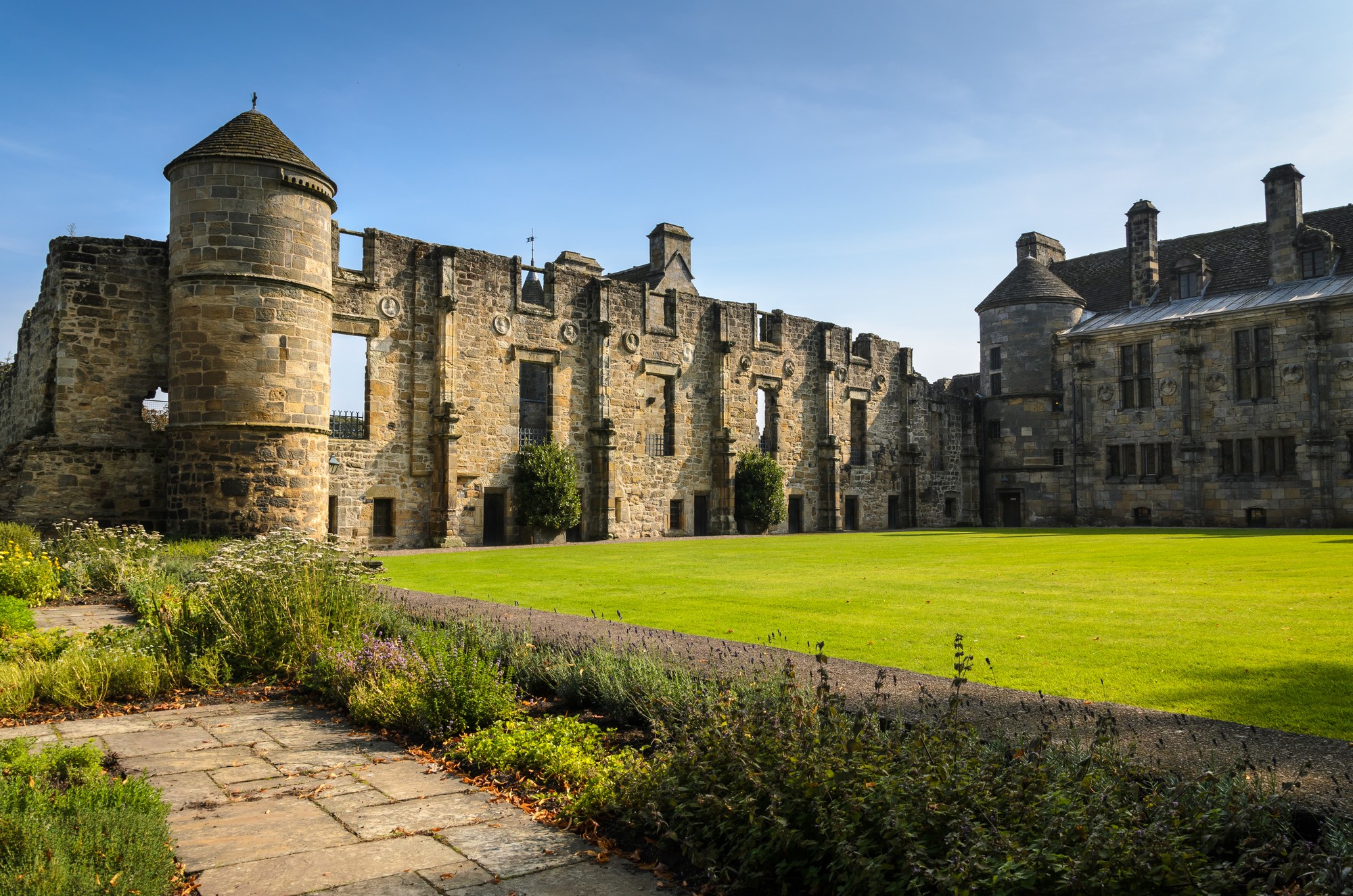
Set in the heart of Scotland’s picturesque Fife region, Falkland Palace is a historical treasure trove that has seen centuries of history, royalty and political change. Its imposing building and lush parkland are testimony to its past importance. This article invites you to discover the rich history of this palace and why it’s well worth a visit.
Falkland Palace was first built in the 12th century as a hunting lodge for the kings of Scotland. However, the structure we see today was mainly built between the 15th and 16th centuries. It is the fruit of the ambitions of the Stuart royal family, who wished to have a castle worthy of their glory and power.
It was during the reigns of James IV and James V that the palace enjoyed its heyday. These monarchs transformed it into a sumptuous residence, combining French elegance with traditional Scottish architecture. Indeed, they added luxurious reception rooms, a royal chapel and immense gardens. It was also in Falkland that James V died in 1542, after learning of the defeat of the Scottish army at Solway Moss.
The most remarkable aspect of Falkland Palace is undoubtedly its architecture. The palace’s two entrance portals, with their turrets and battlements, are authentic Renaissance gems. Inside, the king’s and queen’s halls marvel at their magnificently sculpted ceilings and ornate fireplaces.
The gardens are among the oldest in Scotland. Inspired by Renaissance designs, they feature magnificent flowerbeds, medicinal herbs and a royal tennis court – the oldest of its kind in the world.
Although the palace has been the favorite residence of many Scottish monarchs, it has not been spared the tumult of history. In the 17th century, during the Wars of the Three Kingdoms, the palace was besieged and damaged. Then, after the Union of the Crowns in 1603, when the royal court moved to London, Falkland Palace slowly lost its importance.
In the 19th century, faced with decrepitude, the palace was given a new lease of life thanks to the intervention of the Héritière family, who undertook its restoration. Today, the National Trust for Scotland looks after this precious heritage, ensuring that the palace and its gardens remain a place of learning and fascination for future generations.
On arrival, you’ll be met by a guide who will be delighted to tell you all about the castle’s past. Some may offer a brief introduction to the palace’s history, giving you a taste of what you’re about to discover.
Here is an overview of the palace’s must-sees:
Before entering the palace itself, take a moment to admire the inner courtyard. Its ornate facades, turrets and sculpted gargoyles give a foretaste of the opulence of the Scottish Renaissance.
Inside, you’ll be led through various ceremonial rooms. The King’s and Queen’s rooms are particularly noteworthy for their ornate ceilings, monumental fireplaces and historic tapestries.
The royal chambers offer an intimate insight into the lives of the monarchs. They are often furnished to evoke a bygone era, with four-poster beds, ornate desks and personal objects.
Another highlight is the Chapel Royal, a place of meditation and prayer for Scottish monarchs. Its Gothic architecture and stained glass windows are breathtakingly beautiful.
Don’t miss a stroll through the Renaissance gardens. You’ll discover a variety of plants, geometric flowerbeds and, of course, the famous royal tennis court. It’s an ideal place for a peaceful stroll or to sit and admire nature.
Considered the oldest of its kind still in existence, this pitch is a piece of sporting history. Even if you can’t play a game, it’s fascinating to see.
Like most historic sites, Falkland Palace has a store where you can buy souvenirs and books about the palace’s history. There’s also often a café or tearoom where you can relax and sample local specialties.
 Address:
Address:
 GPS :
GPS :
 Visit duration:
Visit duration:
 Site Web :
Site Web :
 Prices:
Prices: 
